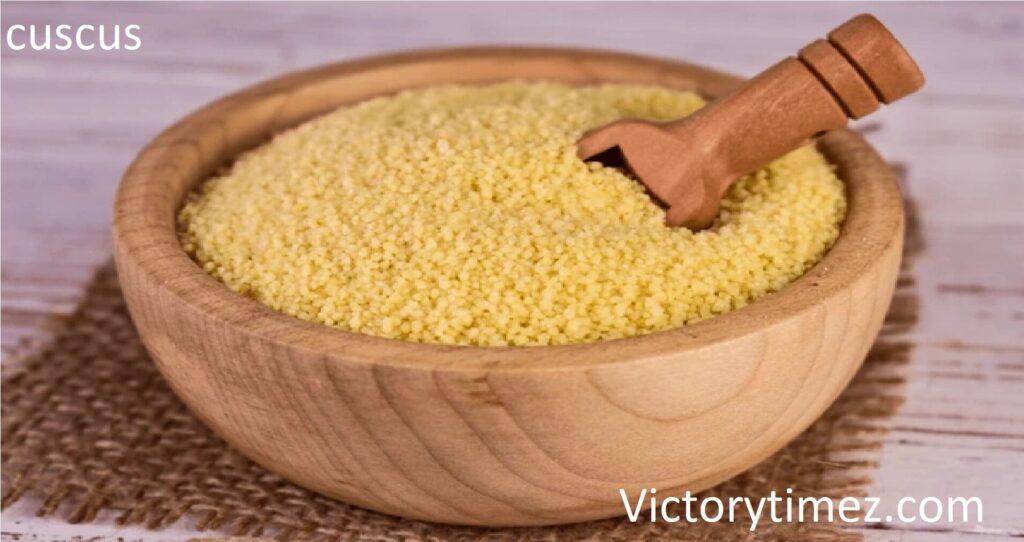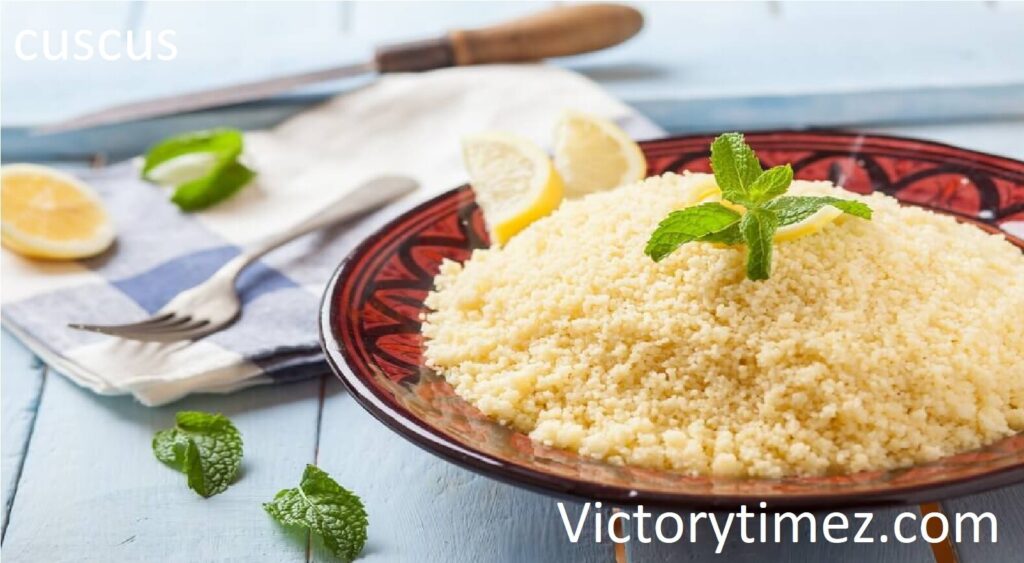
Introduction of cuscus
When it comes to versatile and delightful grains, cuscus is a standout. Whether you’re a foodie or just someone looking to spice up their meals, understanding cuscus can transform your culinary experience. In this comprehensive guide, we’ll explore everything there is to know about cuscus, from its origins to cooking tips and delicious recipes.
The Definition of Cuscus
Cuscus is a traditional North African food made from steamed and crushed wheat. Often confused with couscous, which is the correct spelling, cuscus is a staple in various cuisines due to its adaptability and ease of preparation.
The Origin of Cuscus
The roots of cuscus trace back to the Berber people of North Africa, specifically Algeria and Morocco. It’s been a part of their culinary traditions for centuries, celebrated for its simplicity and flavor.
Types of Cuscus
Traditional Cuscus
Traditional cuscus is made from durum wheat, which is coarsely ground and steamed. It has a slightly nutty flavor and a light, fluffy texture once cooked.
Instant Cuscus
Instant cuscus is a more modern variation that cooks quickly. It’s pre-steamed and dried, making it convenient for fast meal preparations. The flavor and texture are quite similar to traditional cuscus but with less preparation time.
Whole Wheat Cuscus
For a healthier option, whole wheat cuscus is available. It retains more nutrients and fiber compared to its refined counterpart, making it a great choice for health-conscious individuals.
Nutritional Benefits of Cuscus

Rich in Vitamins and Minerals
Cuscus is a good source of B vitamins, which are essential for energy metabolism and overall health. It also contains minerals like selenium, which acts as an antioxidant.
High in Fiber
Whole wheat cuscus, in particular, offers a significant amount of dietary fiber, which aids in digestion and helps maintain a healthy weight.
Low in Fat
Cuscus is naturally low in fat, making it an excellent addition to a balanced diet. It provides energy without the added calories from fats.
How to Cook Cuscus
Basic Cooking Instructions
Measure: For every cup of cuscus, use one cup of water or broth.
Boil: Bring the liquid to a boil.
Add Cuscus: Stir in the cuscus, then cover and remove from heat.
Let It Sit: Allow it to steam for about 5 minutes.
Fluff: Use a fork to fluff the grains before serving.
Tips for Perfect Cuscus
Use Broth for Flavor: Cooking cuscus in vegetable or chicken broth can enhance its flavor.
Avoid Overcooking: Overcooked cuscus can become mushy. Stick to the recommended cooking time.
Add a Dash of Olive Oil: Adding a bit of olive oil or butter can make cuscus even more delicious and prevent clumping.
Delicious Cuscus Recipes
Mediterranean Cuscus Salad
This refreshing salad combines cuscus with cherry tomatoes, cucumbers, olives, and feta cheese, dressed with a tangy lemon vinaigrette.
Cuscus with Roasted Vegetables
Roasted vegetables like bell peppers, zucchini, and carrots pair perfectly with cuscus, offering a hearty and flavorful meal.
Cuscus and Chickpea Stew
A robust and satisfying stew featuring cuscus and chickpeas in a savory tomato sauce, perfect for a comforting dinner.
Serving Suggestions
As a Side Dish
Cuscus can be served as a side dish alongside grilled meats, fish, or tofu. It complements a wide range of proteins and vegetables.
In a Main Course
With the addition of proteins and vegetables, cuscus can be turned into a substantial main course. It’s versatile enough to adapt to various cuisines and flavors.
Common Mistakes to Avoid
Using Too Much Liquid
Too much liquid can make cuscus soggy. Follow the ratio of 1:1 for liquid to cuscus for the best texture.
Not Letting It Sit
Cuscus needs time to absorb the liquid and steam properly. Skipping this step can lead to unevenly cooked grains.
Overcooking
Be cautious not to overcook cuscus, as it can lose its light, fluffy texture and become overly soft.
Storage and Reheating
Storing Leftovers
Store leftover cuscus in an airtight container in the refrigerator. It will keep for up to 5 days.
Reheating
Reheat cuscus in the microwave or on the stovetop. Add a splash of water or broth to prevent it from drying out.
Culinary Uses
While cuscus is more common in North African cuisine, quinoa is popular in South American dishes. Both can be used in similar ways but offer different textures and flavors.
Conclusion
Cuscus is a versatile, nutritious, and easy-to-prepare grain that can elevate any meal. From its rich history to its wide range of culinary applications, understanding cuscus opens up numerous possibilities in the kitchen. Whether you’re preparing a quick side dish or a hearty main course, cuscus is sure to impress with its delightful texture and flavor.